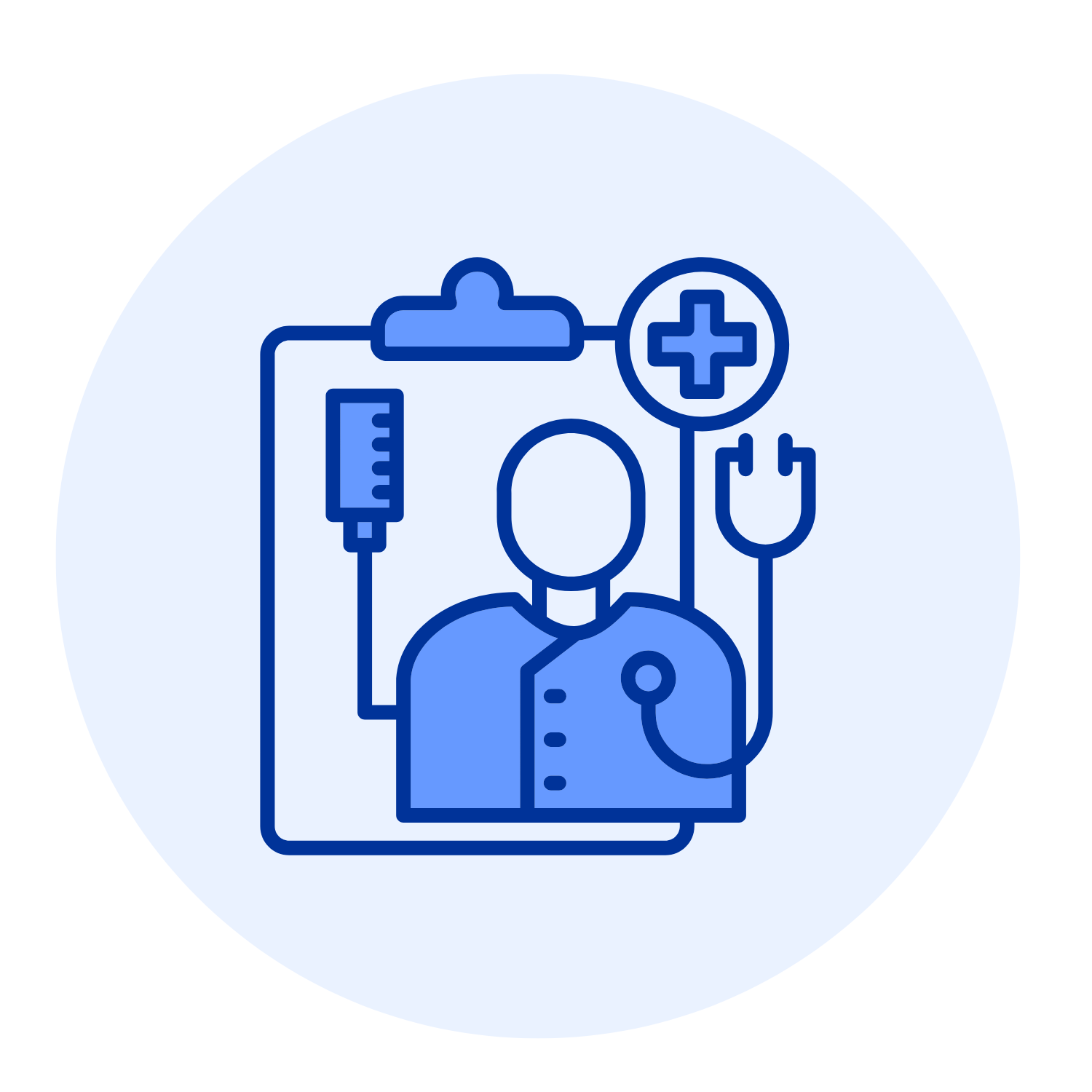- Review the executive’s voice note or written instructions in the AI Tool/Project Management Tool.
- Capture the following in a Personal Health Inventory entry:
- Current providers (name, specialty, location).
- Visit cadence (annual physical, twice-yearly dental, etc.).
- Insurance details (payer, member ID, group #).
- Payment protocol (who pays what and how—co-pays, EA vs. client-handled).
- Privacy consents and communication preferences.
- Use AI Copilot to:
- Draft clarifying questions for any missing or ambiguous information.
- Summarize typical preventive visits to consider (always confirm with the executive; do not give medical advice).
- Confirm execution scope:
- Are you calling providers directly?
- Are you allowed to fill out forms or only prep them?
- Update the PHI and task comments with final scope and confirmed information.
Book an Annual Wellness Sweep Playbook
As the EA, you proactively manage the executive’s annual wellness appointments from start to finish. This includes: (1) Identifying required preventive visits. (2) Scheduling appointments and managing waitlists. (3) Selecting providers (if needed) and validating insurance. (4) Handling paperwork and pre-visit requirements. (5) Maintaining a Personal Health Inventory (PHI) for continuity over time. All tasks are managed and documented in the AI Tool/Project Management Tool (task + comments), with AI Copilot assisting in clarifying missing details, summarizing preventive visit needs, drafting communications, and optimizing schedules)

Book an Annual Wellness Sweep Playbook
Overview / Purpose
As the EA, you proactively manage the executive’s annual wellness appointments from start to finish. This includes:
- Identifying required preventive visits.
- Scheduling appointments and managing waitlists.
- Selecting providers (if needed) and validating insurance.
- Handling paperwork and pre-visit requirements.
- Maintaining a Personal Health Inventory (PHI) for continuity over time.
All tasks are managed and documented in the AI Tool/Project Management Tool (task + comments), with AI Copilot assisting in clarifying missing details, summarizing preventive visit needs, drafting communications, and optimizing schedules.
Why this matters:
Executives often postpone preventive care due to time and logistics. By owning the annual wellness sweep, you ensure they receive timely, coordinated care, reduce the risk of missed or overdue visits, and provide peace of mind that their health is being managed proactively—not reactively.
EXPECTED OUTCOMES
- All required annual checkups are scheduled (or waitlisted) with dates, locations, prep instructions, and paperwork handled.
- Overdue checkups are identified, flagged, and addressed.
- A Personal Health Inventory (PHI) is maintained with providers, cadence, insurance details, and key record links.
- Reminders are set for upcoming and follow-up appointments.
- All approvals, decisions, and updates are logged in the AI Tool/Project Management Tool.
- AI Copilot is used for drafting communications, optimizing booking plans, and generating preventive care reminders.
When to Use / Scope
Use this playbook to manage the executive’s preventive and recurring health visits, including but not limited to:
- Primary care / annual physical.
- Labs and bloodwork.
- Dental cleanings and checkups.
- Eye exams.
- Dermatology skin checks.
- OB/GYN or urology visits.
- Vaccines and other age-appropriate screenings (per physician guidance).
Pre-conditions
- Executive has shared basic health management preferences (e.g., comfort level with new vs. existing providers, telehealth vs. in-person).
- Access to relevant portals/records, where permitted (provider portals, insurance portal).
- Insurance details available (payer, member ID, group number).
- Agreement on privacy boundaries and where PHI can be stored (approved tools only).
Roles & Responsibilities
Executive Assistant
- Gathers health logistics information (providers, insurance, cadence, history).
- Audits appointments and identifies overdue or upcoming preventive visits.
- Schedules appointments, manages paperwork, and sets reminders.
- Maintains the Personal Health Inventory and documents outcomes.
- Uses AI Copilot to support planning, communication, and reminders.
Executive
- Confirms consents, preferences, and comfort level with specific providers or schedule patterns.
- Completes any required forms or portal actions that cannot be done by the EA.
- Provides feedback on providers and visit experience when needed.
Providers / Clinics
- Deliver care, share visit outcomes and follow-up instructions.
- Provide required forms, prep instructions, and availability.
Finance / Insurance / Benefits (if applicable)
- Clarify coverage, copays, deductibles.
- Help resolve insurance or billing issues if escalated.
Templates & Tools
Tools:
- AI Tool/Project Management Tool (tasks, comments, PHI notes, reminders).
- Calendar (Google/Outlook) for appointments and prep reminders.
- Provider portals (for scheduling, records, messaging).
- Insurance portals (for in-network checks and coverage confirmation).
- Secure document storage (for PHI and records, per client preference).
AI Copilot Power Prompts:
- “Draft clarifying questions to confirm which preventive visits to include for a [age/sex] client. Do not provide medical advice—just structure questions.”
- “Summarize overdue checkups and upcoming visits from this Personal Health Inventory and propose a booking plan.”
- “Draft an email to [Provider] requesting an annual appointment for [Client], including insurance details and scheduling constraints.”
- “Summarize prep instructions (fasting, forms, arrival times) into a single calendar note.”
Client Feedback Template:
Hi [Client], I’ve completed your annual wellness scheduling and updated your Personal Health Inventory with all appointments, providers, and follow-ups. Could you share a quick note—does this cadence and level of detail match what you’d like going forward, or should I adjust anything (timing, providers, clustering of appointments)?
Success Indicators / Metrics
- 100% of required annual checkups identified and scheduled or waitlisted.
- No missed appointments due to lack of reminders or missing paperwork.
- Centralized Personal Health Inventory is always up-to-date and accessible (in the agreed secure location).
- Zero scheduling conflicts with the executive’s calendar.
- Executive reports a “frictionless” healthcare logistics experience.
Best Practices, Tips & Pitfalls
Pro Moves
- Maintain a living Personal Health Inventory including:
- Providers and specialties
- Visit cadence (annual, semi-annual, etc.)
- Insurance details and in-network status
- Key portals and logins (stored securely)
- Cluster multiple appointments into efficient blocks (e.g., eye + dental + labs in the same week) to minimize disruption.
- Pre-fill forms where allowed and flag what the executive must complete or sign.
- Verify in-network status and coverage details before booking to avoid surprise costs.
- Label calendar entries discreetly (per client’s privacy preference), while still including necessary prep instructions and alerts.
Top Mistakes to Avoid
- Incomplete info gathering (missing insurance numbers, providers, or visit history).
- Scheduling appointments without aligning with the executive’s calendar or travel schedule.
- Overlooking pre-appointment prep (fasting, forms, labs, referrals).
- Poor documentation—no centralized record of appointments, outcomes, or follow-ups.
- Waiting for the executive to ask, instead of initiating proactive annual sweeps.
CLIENT FEEDBACK LOOP
After each annual sweep (or major scheduling cycle), send:
“Hi [Client], I’ve completed your annual wellness scheduling. Your appointments are booked, with details and prep instructions added to your calendar and documented in the AI Tool/Project Management Tool and your Personal Health Inventory. A few items are still pending: [list if any]. Could you let me know if this cadence and level of detail match what you’d like for future wellness sweeps, or if you’d like any adjustments (providers, timing, clustering)?”
Log feedback in the AI Tool/Project Management Tool and update the Personal Health Inventory and future process to align with the executive’s preferences.
Troubleshooting & Edge Cases
- Provider unavailable for months:
- Book first available appointment and add to waitlist.
- Find and present 1–2 in-network alternative providers for approval.
- Insurance change mid-process:
- Revalidate in-network status for all upcoming providers.
- Update PHI with new insurance details and coverage notes.
- Overdue labs or follow-ups:
- Flag overdue items clearly in the AI Tool/Project Management Tool.
- Request an order or instructions from the provider (where allowed).
- Client unavailable for phone calls:
- Request email or portal-based booking when possible.
- Use AI Copilot to draft messages or forms that can be sent asynchronously.
- Multiple locations / properties:
- Track preferred clinic locations in PHI (e.g., “near home,” “near office”).
- Confirm preferred location before booking new appointments.
- Sensitive health topics:
- Follow agreed privacy rules strictly.
- Store and share sensitive details only in approved, secure channels.

- Audit:
- Executive’s calendar (past and upcoming health appointments).
- Provider portals (visit history and future bookings).
- Identify:
- Overdue visits based on the PHI cadence.
- Upcoming visits that need confirmation, labs, or prep.
- Confirm insurance/in-network status for each provider (via portals or coverage tools).
- If new providers needed:
- Use AI Copilot to research candidates and build a comparison table (reviews, location, insurance acceptance).
- Propose a booking plan (grouping, timing, order of visits) in the AI Tool/Project Management Tool, then share for client review/approval.


- Schedule appointments in logical order (often PCP/primary care first, then specialists and labs, followed by dental, eye, dermatology, OB/GYN/urology, vaccines as applicable).
- For each appointment:
- Confirm date, time, location, and type (in-person vs. virtual).
- Request and pre-fill forms where allowed; flag signatures needed from the executive.
- Capture prep instructions (fasting, no meds, arrive early, bring paperwork).
- Use AI Copilot to draft:
- Provider emails or portal messages.
- Call scripts, if you need to phone offices.
- A summary of the appointment plan for the executive.
- Add prep instructions and visit details into calendar entries with reminders (e.g., “Begin fasting at [time]”).
- Note all confirmations and any paperwork status in the AI Tool/Project Management Tool.
- Send appointment reminders to the executive (e.g., 48 hours and same-day reminders).
- After each visit:
- Prompt the executive for outcomes: any follow-ups, labs, referrals, medication changes.
- Where permitted, download visit summaries or lab results from portals.
- Upload or link:
- Notes, summaries, and key instructions into the PHI (stored in an approved secure location).
- Update:
- Visit date completed.
- Next recommended date (cadence reset).
- Any new providers or changes in preferences.
- Log a concise post-visit note in the AI Tool/Project Management Tool, including follow-ups needed.


- Schedule follow-up appointments as recommended (e.g., 3-month revisit, repeat labs).
- Track:
- Pending items (lab results, referrals, EOBs).
- Any insurance issues that may need attention.
- File records securely in the client-approved system and ensure PHI links remain current.
- Provide periodic check-ins (e.g., monthly or quarterly) summarizing:
- Completed visits
- Upcoming appointments
- Outstanding actions
- Use AI Copilot to:
- Forecast the next annual sweep and suggest ideal “clusters” of appointments.
- Generate preventive care reminder schedules for the coming year.



